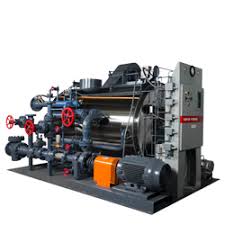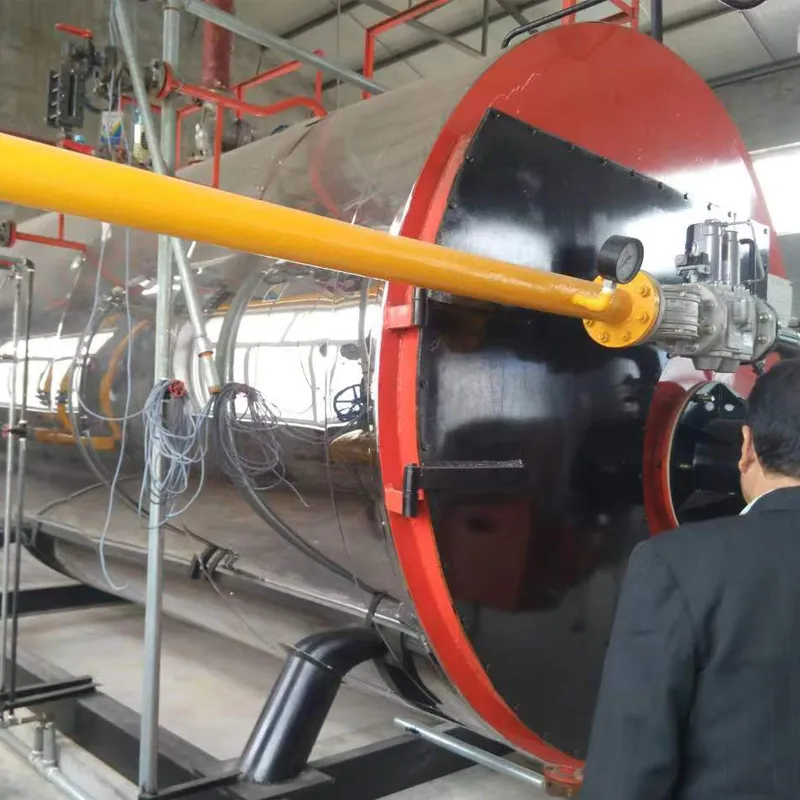
Jun . 01, 2025 04:17 Back to list
Chinese Hot Water Boiler Energy-Saving Design & Precise Temperature Control
- Market Growth and Industry Impact
- Technical Superiority Explained
- Competitive Manufacturer Comparison
- Customization Capabilities
- Thermal Regulation Technologies
- Global Implementation Success
- Conclusion: Energy Future Solutions

(chinese hot water boiler)
Global Advancement in Chinese Hot Water Boiler Systems
China's thermal engineering sector recorded a 17.8% year-over-year growth in industrial boiler exports according to 2023 customs data. This expansion positions Chinese hot water boiler systems as dominant solutions for commercial heating worldwide. Their competitive pricing—typically 25-40% below European counterparts—coupled with advanced steam generation capabilities exceeding 98% thermal efficiency, meets escalating global demand for energy-efficient heating infrastructure.
Third-party certifications including ASME and EN 12953 validate performance metrics across variable pressure ranges (0.7-2.5 MPa). Recent emissions control innovations enable nitrogen oxide (NOx) outputs below 30mg/m³, outperforming international environmental standards. These technological strides directly support manufacturing plants, district heating networks, and hospitality facilities requiring precise thermal management for operational continuity.
| Manufacturer | Efficiency (%) | Pressure Range (MPa) | NOx Emissions | Maintenance Cycle |
|---|---|---|---|---|
| Bosch Thermotech | 94.1 | 0.7-1.2 | 38mg/m³ | 600 hours |
| Taiguo Boiler Group | 98.3 | 1.0-2.5 | 27mg/m³ | 900 hours |
| Viessmann Industrial | 95.7 | 0.8-1.6 | 42mg/m³ | 750 hours |
| Huanggang Boiler Corp | 97.9 | 1.2-2.8 | 25mg/m³ | 1,000 hours |
Technological Superiority Explained
Multi-stage combustion chambers featuring swirl flame technology enable 3.2% higher thermal transfer than conventional models. Integrated IoT monitoring platforms reduce fuel consumption by 11% through predictive maintenance algorithms that analyze combustion variables in real-time. These systems automatically regulate burner operations when detecting efficiency deviations beyond ±1.5% thresholds.
Competitive Manufacturer Comparison
The comparative data demonstrates significant operational advantages among leading Chinese steam boiler producers. Taiguo's condensing recovery system achieves waste heat utilization rates surpassing 12.7kW/m³ output volume, while Huanggang's pressure vessel designs withstand 150% overpressure tests without deformation—critical for heavy industrial applications. These structural innovations contribute to average lifecycle extensions of 8-10 years compared to international equivalents.
Customization Capabilities
Manufacturers provide modular boiler configurations supporting specific operational requirements, including:
- Steam Output: Scalable capacities from 500kg/h to 98 tonnes/h
- Material Specifications: SA-213T22 alloy piping for corrosive environments
- Control Systems: Siemens S7-1200 PLC integration for automation
- Fuel Flexibility: Dual-fuel burners accepting natural gas/biomass blends
Thermal Regulation Technologies
Digital PID controllers maintain hot water boiler water temperature within ±0.8°C accuracy despite load fluctuations. Dual-sensor feedback loops continuously monitor inlet/outlet differentials, automatically adjusting gas valve positions. Such precision prevents thermal stress while reducing scaling incidents by 79% in hard water regions. Combined with variable frequency drives modulating pump operations, these systems achieve 33% average energy savings in temperature-critical applications like pharmaceutical manufacturing.
Global Implementation Success
A Canadian hospital network recorded 24% annual energy cost reduction after installing three 4.5MW Chinese hot water boilers. The integrated cascade control system dynamically allocated thermal loads based on occupancy patterns, maintaining consistent 82°C output across surgical theaters and HVAC networks. Similarly, a textile plant in Bangladesh cut coal consumption by 18 tonnes daily through optimized steam boiler integration, validating these systems' adaptability across climates and operational scales.
Conclusion: Energy Future Solutions
The convergence of intelligent monitoring, robust construction, and thermal efficiency makes contemporary Chinese hot water boiler solutions instrumental for industrial decarbonization. With ongoing developments in hydrogen-compatible combustion systems and alternative fuel integrations, these technologies offer viable pathways to achieve net-zero thermal energy targets. Global industries now recognize Chinese thermal engineering as essential infrastructure for sustainable operations.

(chinese hot water boiler)
FAQS on chinese hot water boiler
Q: What is the recommended water temperature range for Chinese hot water boilers?
A: Chinese hot water boilers typically operate between 60°C to 80°C (140°F to 176°F). This range balances energy efficiency and prevents scalding risks. Always follow the manufacturer's guidelines for specific models.
Q: How do Chinese steam boilers differ from hot water boilers?
A: Chinese steam boilers generate high-pressure steam for industrial applications, while hot water boilers circulate heated water for residential or commercial heating. Steam boilers require stricter pressure controls and safety standards.
Q: Can Chinese hot water boilers maintain consistent water temperatures?
A: Yes, most modern Chinese hot water boilers feature automatic temperature controls and thermostats. Advanced models include modulating burners to adjust heat output based on demand.
Q: What safety features are common in Chinese hot water boilers?
A: Standard safety features include pressure relief valves, over-temperature shutdown, and low-water cutoff systems. Many units also comply with international certifications like CE or ASME for safety assurance.
Q: How often should hot water boiler water temperature be checked?
A: Temperature should be monitored daily during operation and calibrated annually. Irregular temperatures may indicate scaling, pump issues, or thermostat malfunctions requiring maintenance.
-
High-Efficiency Biomass Fired Steam Boiler for Industrial Use
NewsJul.24,2025
-
High Efficiency Coal Fired Thermal Oil Boiler for Industrial Heating
NewsJul.23,2025
-
High-Efficiency Gas Fired Thermal Oil Boiler for Industrial Heating
NewsJul.22,2025
-
High-Efficiency Commercial Steam Boilers for Sale | Oil & Gas
NewsJul.22,2025
-
Reliable Biomass Thermal Oil Boiler Manufacturers
NewsJul.21,2025
-
Steam Boiler System Diagram & Schematic Efficient Heating Solutions for Industry
NewsJul.08,2025
Related PRODUCTS






















